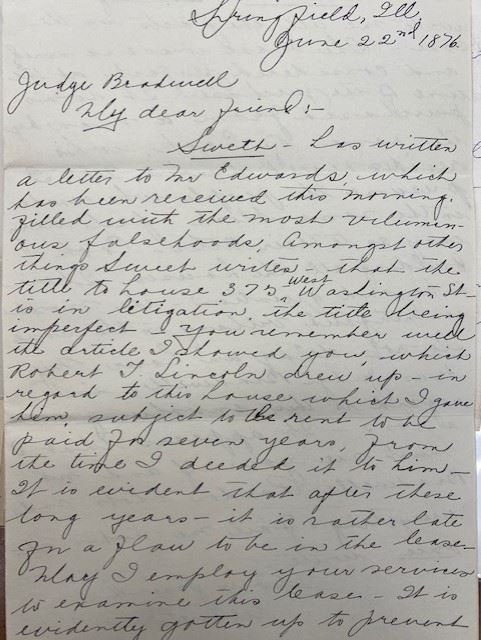
by Teri Finneman, University of Kansas
Sitting at the Library of Congress, I held up the first letter and could feel my brain shifting like it was trying to remember high school calculus.
Except it wasn’t calculus. It was cursive writing. And I was trying to compute a language that I hadn’t used in years.
Discussions (and K-12 debate) about cursive writing have been going on for years. But during my trip to Washington to finally use my 2019 McKerns Grant, I found myself feeling a twinge of fear. Not scary fear, but vanishing culture fear.
After prior archive trips, I often would need to have my mom or my grandma help me read some cursive writing that I brought back. But this trip was worse than usual.
Some of it, I’m sure, is pandemic brain of trying to re-enter society in general. I used to know D.C. so well, yet I found myself making some wrong turns at times as I reacquainted myself with being outside of a Covid bubble and being back in reality.
But I’m also a Millennial. I spend 16 hours a day on a laptop or phone. My grandma died four years ago, essentially erasing all cursive writing exposure in my life now that I no longer receive her letters.
 So as I sat in the manuscript room, I felt good looking at Grace Coolidge’s letters. I had to sit and think about Mary Lincoln’s (shown here) and knew that my mom was going to have to help with some of the words.
So as I sat in the manuscript room, I felt good looking at Grace Coolidge’s letters. I had to sit and think about Mary Lincoln’s (shown here) and knew that my mom was going to have to help with some of the words.
But Angelica Van Buren’s? I was so overwhelmed looking at that horrible faded brown ink cursive writing that I didn’t even take a single picture of it. Not a single word of it computed in my fuzzy brain.
I put the folder away quickly and moved on. But then I felt a massive amount of guilt for the next two days. If I, a first ladies researcher, was giving up that easily on Angelica, who would ever tell her story?
I wish I could say that I went back and tried again or at least took a picture. But I didn’t. Instead, I found myself wishing I could somehow take a class in historical cursive writing. And I find myself wondering what’s going to happen with Generation Z and the next generation of historians. Will we one day get to a point when few know how to read these materials?
The thought of that weighed heavily on me as I typed this sitting at Reagan airport. What can we do about this? Do we need to have a session at AJHA where there are a bunch of letters and a group of us Millennial and Gen Z scholars are put in a room while more senior faculty help us re-learn how to read cursive writing that we’ve barely used since fifth grade? I, for one, would gladly attend that session ASAP.
Maybe it’s just a matter of self-practice. Maybe I need to just pull up more digitized letters and get my brain used to seeing that language again. I’d be curious to know your tricks for reading historical writing and may need to get a Facebook conversation going on it.
Meanwhile, for those wondering about archive visits during a pandemic, the Library of Congress requires a special appointment to go under its Covid protocols. A limited number of people are allowed inside and are only guaranteed a half-day appointment each day. I made my appointment four weeks before going and opted for morning shifts. We could check to see if there were any afternoon openings once we got there, but there weren’t. They were full.
Once there, it felt very safe inside with all of us spread out and everyone required to wear a mask. From there, operations were fairly normal. I didn’t have any Covid safety concerns at all inside the building.
However, masking from tourists at my hotel was hit or miss despite being required. The same was true for a portion of men in the airport terminals. So that was the most pressing concern of archive travel and the predominant concern for any other historians to weigh as they determine whether to get back to the archives.

